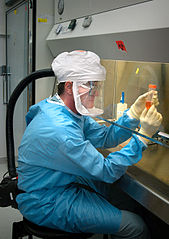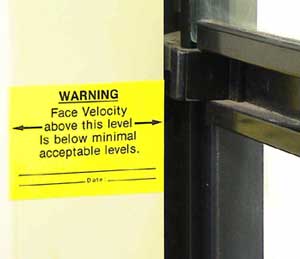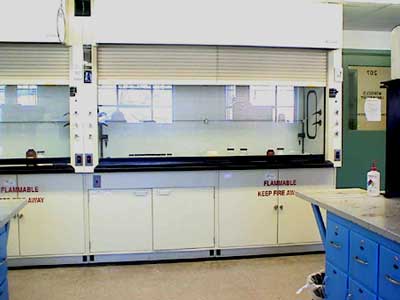Science Laboratory Safety
Training and Testing
General Lab Safety Training
Radiation Safety
Biosafety and Bloodborne Pathogens Safety
Standard Operating Procedure (Extremely Hazardous Materials) and Chemical Hygiene Plan (CHP)
Chemical Inventory for the Physical Sciences (Chemistry, Biochemistry, Biology, and Physics)
Hazardous Communication (Hazcom) Training and Quizzes
n order to provide training on Hazardous Communication, we use OSHA’s free online training site. There is a training module and a quiz that you must take. Please read the instructions given below before following the link to the online training.
Follow the link to the training at the bottom of the page.
To have your results sent to the Office of Environmental Health and Safety, you must fill in the information at the top of the quiz page. Use these guidelines to help you:
- First Name and Last Name:
Enter your own first and last names. - Trainee SSN or Employee No:
You can just enter your Clark University email address here. - Your score will be mailed to:
Enter the email address for the chemical safety officer, jbosselman@clarku.edu.
Personal Protective Equipment
Personal protective equipment (PPE) is used to reduce injuries and illnesses caused by exposure to hazardous substances or conditions.
There are four ways by which hazardous materials can invade one’s body:
- Inhalation
- Skin absorption
- Ingestion
- Injection
These four ways of invasion are known as routes of entry. OSHA requires employers to assess the potential hazards associated with all substances in the work areas and provide engineering and administrative controls to reduce exposures to acceptable levels. It is the responsibility of the area supervisor to ensure that his/her employees be provided the equipment necessary to safely carry out procedures. The Safety Office will assist on the selection, purchase, maintenance and training of employees for the use of PPE.
Personal protective equipment (PPE) commonly available in the stockroom
- Disposable gloves (large, medium, small, and x-large)
- Disposable barrier gowns
- Full face respirators (both small and medium-large).
- Multi-Purpose/P100 filter cartridges.
- Safety goggles
- Shoe covers
- Dust masks
Other protective equipment will be made available upon request.
BioSafety Cabinets
Biological safety cabinets are divided into three classes based on the amount of protection they provide.
Class I: The investigator is partially protected, no protection for the sample.
Class II: The investigator is partially protected and the sample is protected.
Class III: Both the sample and the investigator are protected.

How to Use BioSafety Cabinets Safely
Follow these rules:
- Turn it on 5 minutes before use to allow the airflow to establish itself.
- Lower sash as far as you can.
- Do not block airflow.
- Secure papers to prevent entrapment in the exhaust line.
- Wipe down the surface with disinfectant before each use.
- Minimize hand movement.
- Do not use a flame inside the cabinet.
Fume Hoods
A chemical fume hood is a partially enclosed workspace that is exhausted to the outside. When used properly, hazardous gases and vapors generated inside the hood are captured before they enter the breathing zone. Fume hoods are tested by the safety office. If you suspect that the hood in your lab is not working, place a “broken hood” sign on the hood sash and call Frank Abell at (x7280).
Download “OUT OF ORDER” signStandard Operating Procedures
- Confirm that the hood is operational.
- Maintain operations at least 6″ inside.
- Lower sash to optimum height.
- Keep head out of the hood.
- Keep hood storage to a minimum.
- Minimize foot traffic around the fume hood.
- Use extreme caution with ignition sources inside.
- Replace hood components prior to use.


Environmental Health and Safety
Arthur M. Sackler Sciences Center
Room S108
Worcester, MA 01610
1-508-793-7280
1-508-793-7117
Chemical Safety Officer, ehs@clarku.edu
